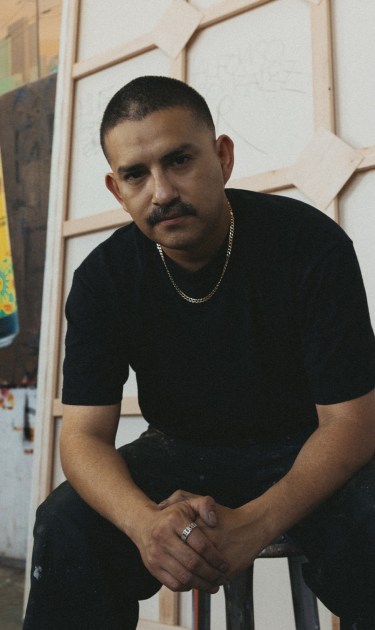Alfonso Gonzalez Jr., born in 1989, grew up amid Los Angeles’ transformation, witnessing the reshaping of community and cultural structures. As a true Angeleno, though, he has found a way to resist the erasure of the neighborhoods that nurtured him. His paintings reflect not just his heritage but a personal crusade against cultural loss.
The budding artist is redefining the narrative of contemporary art. He echoes his family’s heritage of Mexican hand-painted signage, known as Rotulismo Mexicano, while infusing it with his unique perspective, creating a groundbreaking narrative within the art world.
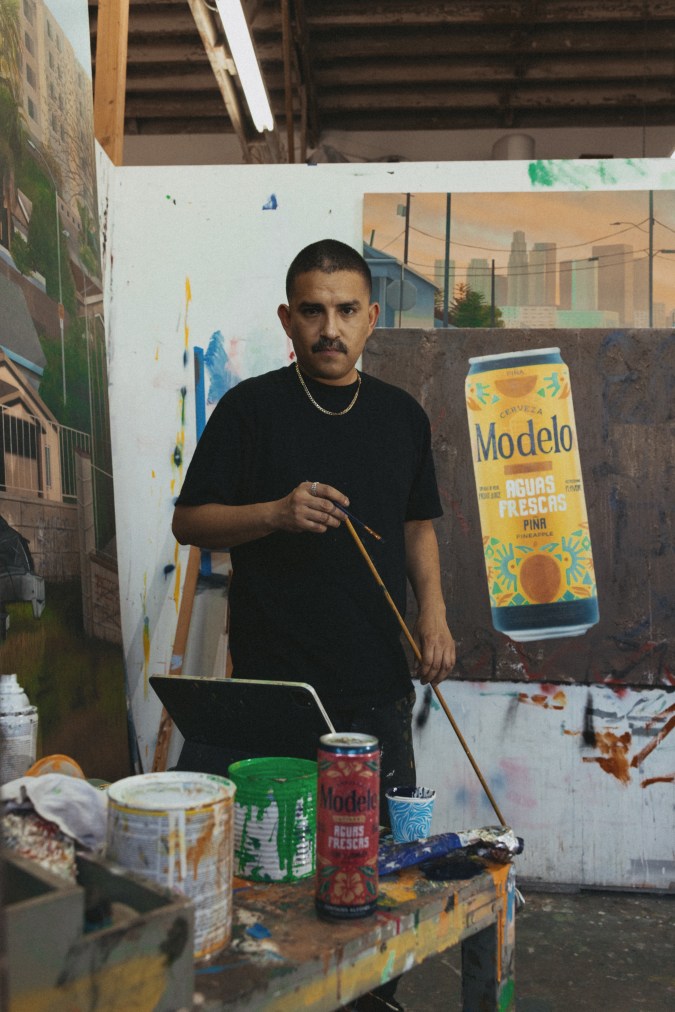
Embodying the richness of his heritage, Gonzalez Jr. partnered with Modelo to create an original art piece for their newest drink, Modelo Spiked Aguas Frescas. The immersive piece draws together components of Gonzalez Jr.’s dedication to Los Angeles (bordering neighboring city views) and Rotulismo Mexicano (with the brand’s unique design of its spiked take on the traditional aguas frescas).
Approaching Modelo Spiked Aguas Frescas as the focus, he transformed his canvas into a glimpse of L.A. through his eyes. The Piña flavor of Spiked Aguas Fresca is at the center of a mural; it’s surrounded by a textured dark brown backdrop that resembles a neighborhood wall decorated and repainted with fading graffiti. Gonzalez Jr. outlines an L.A. neighborhood being watched over by clouds and the city skyline in the distance.
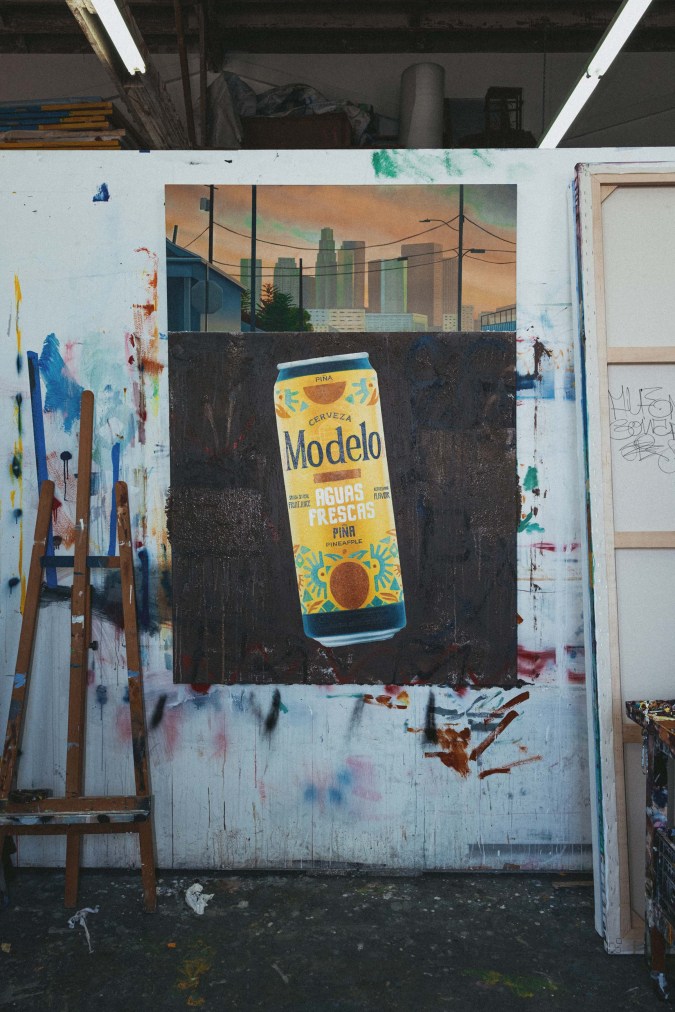
Aguas frescas are a multi-generational, customary drink of Mexican and Latin American gastronomy and culture. Traditionally prepared with seasonal fruit, seeds, edible leaves, and a touch of sweetener, they are popularly housed in Mexican mercados (marketplaces) and offered by food street vendors. Their radiant colors in vitroleros (traditional beehive-shaped glass jars) resemble their refreshing taste and variety in flavor, including jamaica, piña, and sandía.
Aguas frescas are handcrafted like the rótulo signs that advertise them; the prioritization of being made by hand is a dedicated process that mirrors Gonzalez Jr.’s own. “I had fun with certain parts of the composition. I approached certain things about it in a way that was like experimenting,” he says. “A lot gets left up to chance with these layers. You could only control paint so much. Seeing that human touch is important to me. I wanted to capture the layers I’m exploring in my practice.”
His handcrafted art piece for Modelo Spiked Aguas Frescas celebrates and preserves the roots of Rotulismo Mexicano.
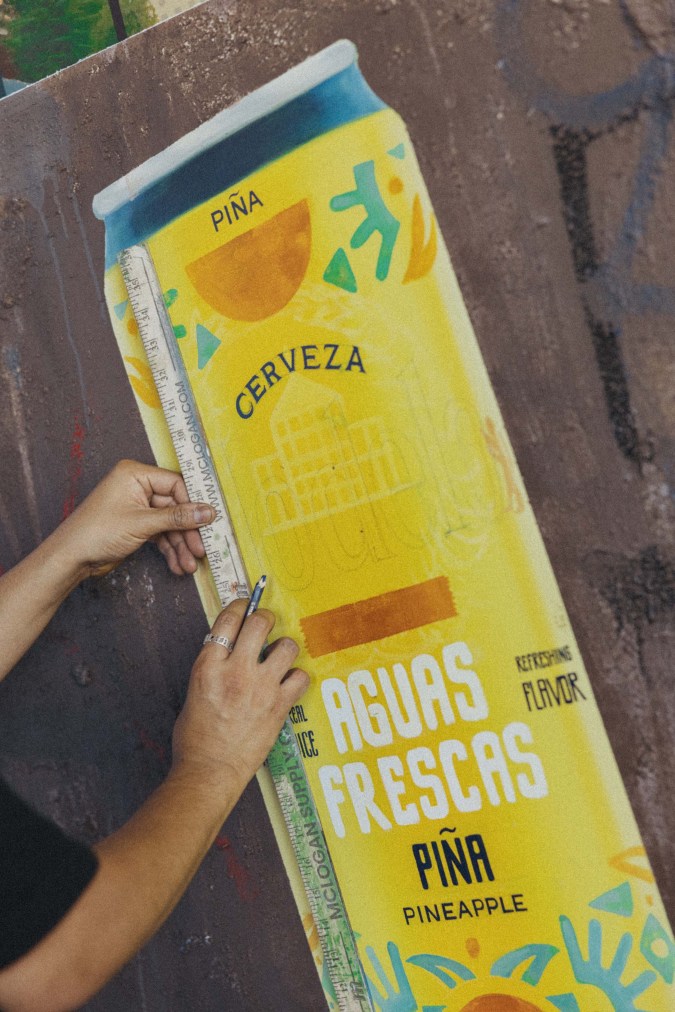
Rotulismo Mexicano represents the richness of the country’s past and the progressive future of its art, culture, innovation, and community. The art form became popular after the Mexican Revolution (1917) and was recognized for its distinguishable lettering, typography, brush strokes, and vivid colors. Rotulismo embodies the style of Mexican culture as expression, direction, and identity through landscape indicators across neighborhoods.
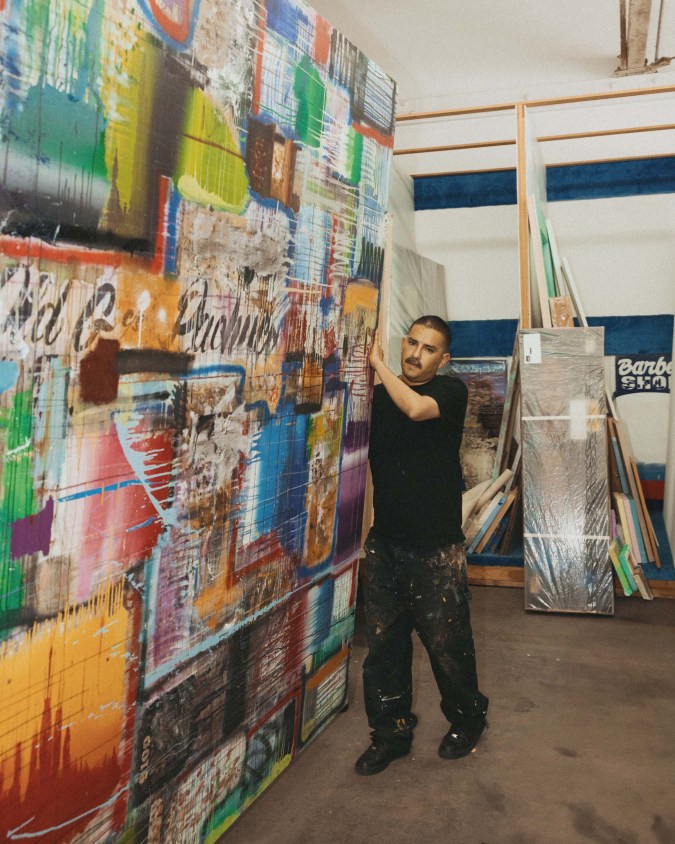
Rotulismo plays a vital role in Gonzalez Jr.’s layered work. He recreates the essence of Los Angeles by documenting combined elements of Rotulismo techniques and the communities and culturally significant establishments that contribute to the pulse of the city.
“I have such a long history with it. Not only have I made a living off of it, but my family has survived off of it,” he shares. “I always embraced and identified with the art form [of Rotulismo]. What I’m trying to do now is not lose that tradition but make it feel like it was made today. When you’ve been doing something for decades, it’s your job. You go about your day-to-day, and then someone comes in. They put it in a different context, as I’m doing within the larger art world and the discourses behind the work. It brings it into this different world where the context changes how people see and value it.”
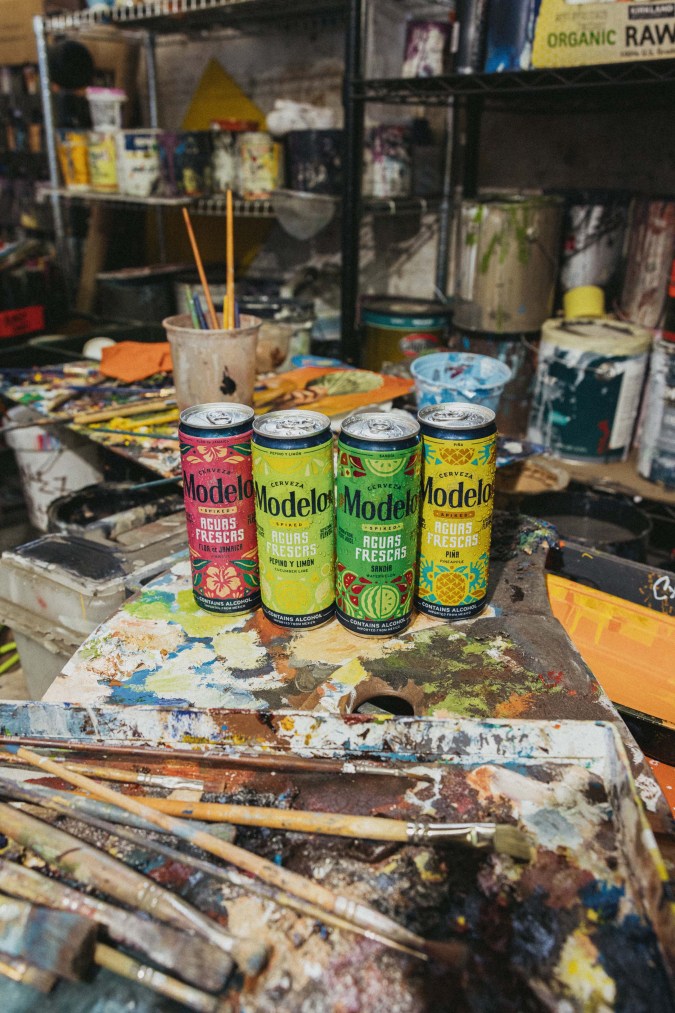
Gonzalez Jr. reveres Rotulismo alongside his father, Alfonso Gonzalez Sr., who has been sign painting for over 40 years. Gonzalez Jr. calls on his father from time to time to add his special touch. “Sometimes I have him add to some of the paintings; then I show him that they’re exhibited in a gallery or museum, and he’s a little surprised.”
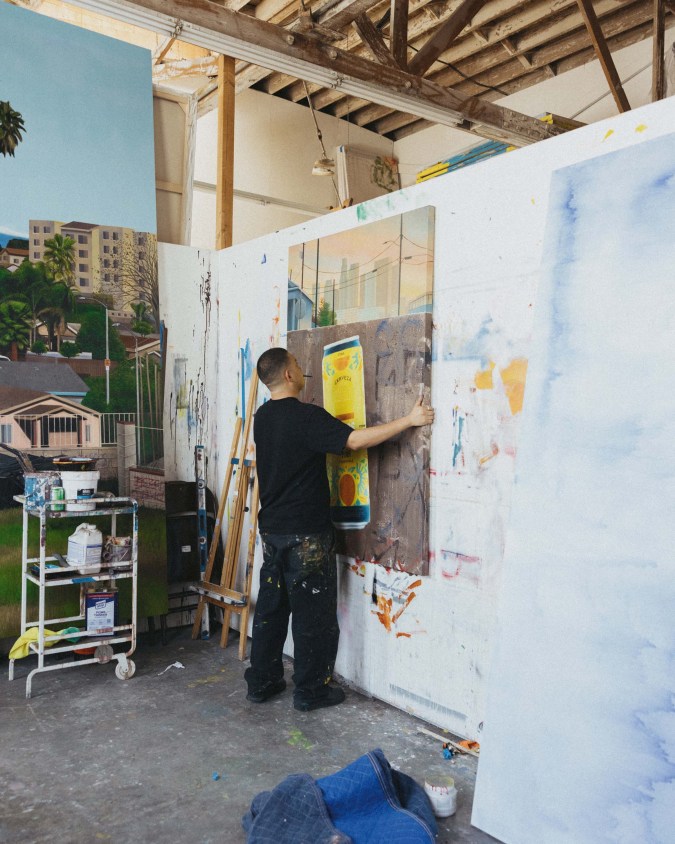
Magnifying his father’s Rotulismo style in his creative process proves how his father’s work continues to impact the art scene and strengthen his family lineage. “Preserving that is important. There are certain things that I will have him do because there’s something about that experience that I can’t do the way he could.”
His creative process is elemental, combining traditional Mexican hand-painted signage alongside nods to Los Angeles local landmarks. Like puzzle pieces, he connects significant sites to L.A. natives, like Boyle Heights’ Evergreen Cemetery to El Pato Factory, with the city’s culture, from lowrider and car culture to barber shops and beauty shops – all unique to his admiration for the people and places he’s connected with on his journey. “Much of my work is documented every day, the same few miles from my house to the studio. I see things that I unexpectedly document, and then they make their way into my work,” he shares.
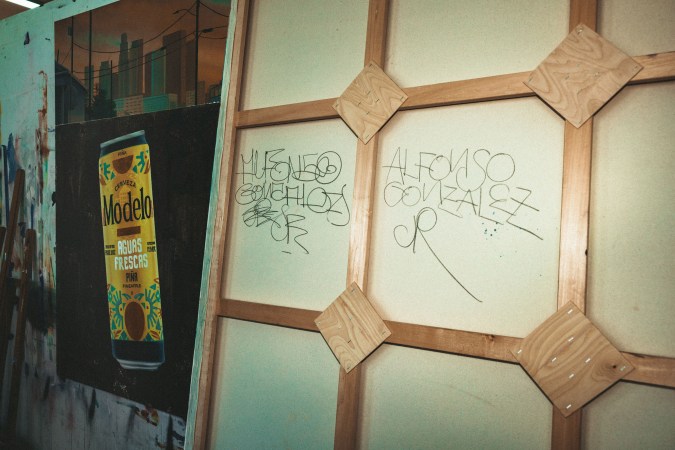
Although Rotulismo is still used today, the art form is slowly disappearing. It is on the brink of extinction due to modern, digital design and various government efforts in México to “improve urban surroundings.” The art form’s direction towards erasure parallels the gentrification of L.A. architecture and communities, which Gonzalez Jr. is trying to preserve through his art.
“I’ve seen the changes of the city and the peripheries since I was a child—all of L.A., Downtown L.A., Inland Empire, San Fernando Valley, San Gabriel Valley. We’re living in this unprecedented time, and I’m trying to capture it. When I travel and come back and see a business is gone, murals painted over and the signs are gone, it’s the erasure of culture,” Gonzalez Jr. reflected on the propellor of inspiration behind his work.
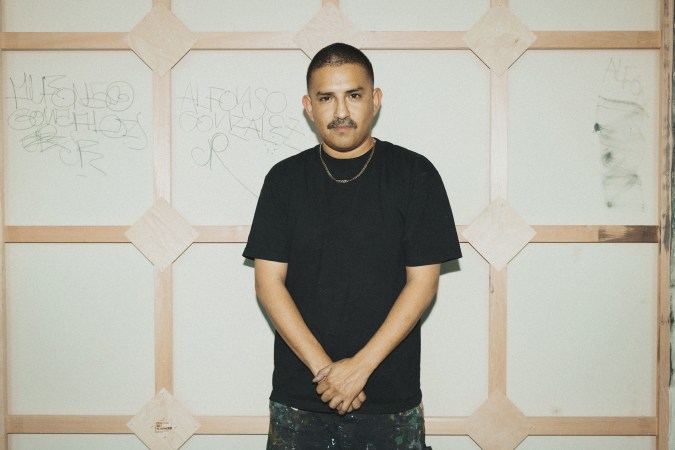
Gonzalez Jr. approaches his work as a study by chronicling the visual history of Mexican tradition, Los Angeles cityscapes, and the layers of timelessness that connect the two.
For more information on the bold and vibrant flavors of Modelo Spiked Aguas Frescas, visit here.
Drink responsibly. Modelo® Aguas Frescas Flavored Beer. Imported by Crown Imports, Chicago, IL.
